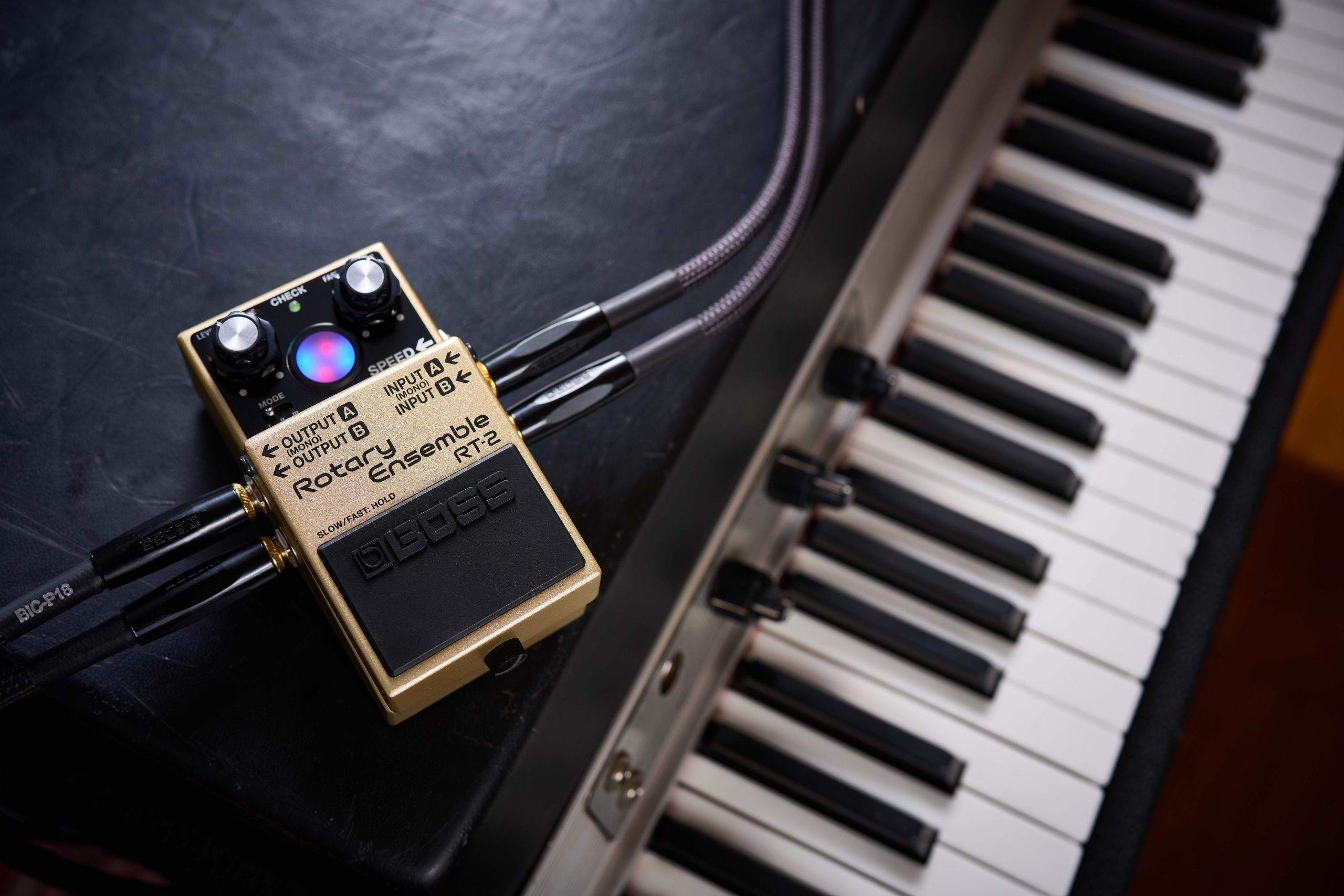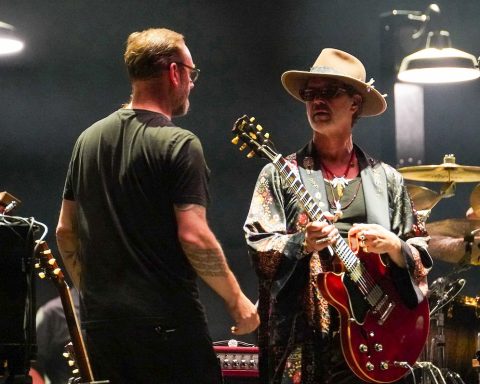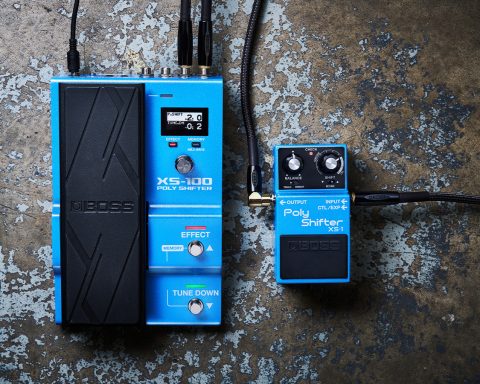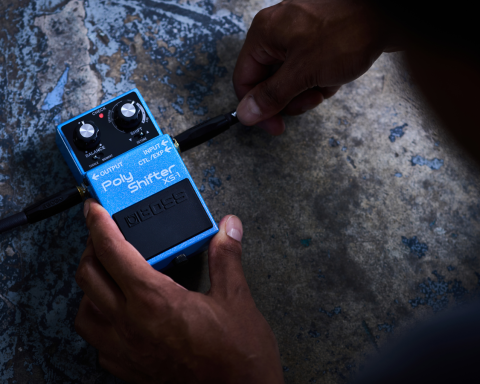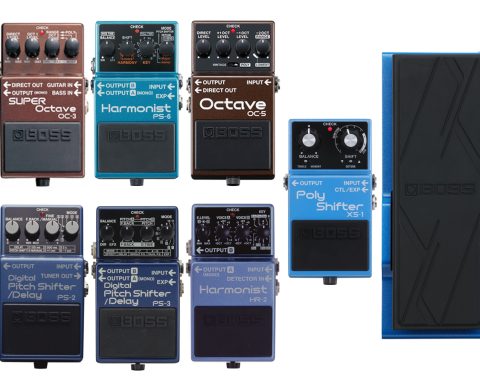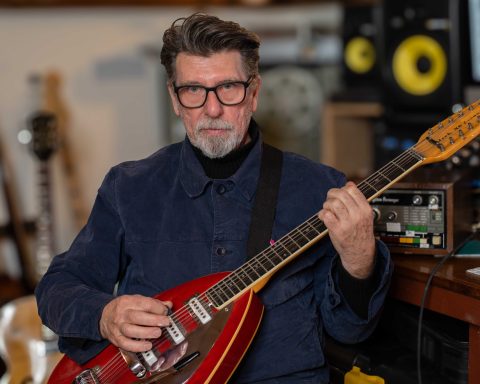BOSS has been the leading force in the world of effects pedals since 1976 and the debut of the CE-1 Chorus Ensemble. However, the compact pedal design is the flavor you’re probably most familiar with. Debuting in 1977, it’s remained an iconic and colorful presence in studios and on stages ever since. Although commonly associated with guitarists, keyboardists can also benefit from BOSS pedals thanks to their sound quality, reliability, specs, variety, ease of use, and consistency. After all, there’s a reason the line is still going strong all these decades later.
Creativity and Expression
Whether you’re playing your keyboards on the stage, tracking in the studio, practicing with the band, or holed up in the lab experimenting with sound and texture, you’re sure to find a BOSS pedal to fit your niche.
The range is, in a word, massive. There’s a unit for every occasion, including rotary speaker cabinet emulation, reverb, delay, overdrive, distortion, modulation of all kinds, and even Loop Stations.
Let’s look at each of these categories and explore how BOSS pedals can take your keyboard playing to new heights of creativity and expression.
"Whether you’re playing your keyboards on stage or in the lab experimenting with sound and texture, you’re sure to find a BOSS pedal to fit your niche."
Get in the Spin: Rotary Effects
You may have heard it: a mysterious and fluctuating effect on organs, guitars, or even vocals. It’s obviously a kind of modulation, yet it doesn’t sound like flanging, phasing, or tremolo. What you hear is rotary, and the newest BOSS compact pedal—the RT-2 Rotary Ensemble—puts this sweet, spacious sound under your control.
Invented by Donald Leslie in the late 1930s to improve the sound of organs, the Leslie speaker (as it’s best known) doesn’t rely solely on analog electronics but on physical mechanics, also. See, the Leslie is a rotating speaker cabinet, and it’s that spinning action that gives the rotary effect its trademark sound: real-world fluctuations in pitch (the Doppler effect) and amplitude.
The most famous Leslie model, the 122, featured two independently spinning sections: a woofer rotor and a horn rotor for the upper frequency range. Originally paired with organs, skilled players could manipulate the speed controls to create dynamic effects and swells that added color and depth to the music.
Whether you’re looking for vintage or modern tones, the RT-2 distills that coveted Leslie sound into a single compact pedal. Running your keyboard instrument through it can yield all manner of wild and wonderful modulation sounds with a wide stereo spread and swirling warmth. Couple it with other pedals, such as drive, delay, or reverb, to take things to the next level.
"Running your keyboard instrument through the RT-2 can yield all manner of wild and wonderful modulation sounds."
Up in the Clouds: Reverb Effects
When most people think of pairing a keyboard with an effect, particularly for synthesizers, that effect is reverb. It gives the sound space and makes it feel more natural. It can make almost anything sound better. And, when used creatively, it can open up entirely new vistas of sound design.
Start your exploration of BOSS Reverb units with the RV-6, a compact pedal that packs a lot of space into a small package. Simple but sophisticated, it offers eight high-quality sound modes ranging from tried-and-true algorithms like Hall and Plate to luscious modern selections like Shimmer, Dynamic, and +Delay.
For more creative power, upgrade to the RV-200 with its 12 modes, including mind-bending effects like Arpverb, which combines a lush reverb with arpeggio-like movement.
Need more? Aim high for the RV-500, BOSS’s top-of-the-line Reverb pedal. With its studio-grade 32-bit AD/DA conversion and 32-bit/96 kHz floating point processing, it sounds absolutely incredible. It also has power to spare under the hood, offering 12 modes with 21 reverb types, all featuring deep editing parameters and independent digital delay with modulation.
Of course, all three BOSS Reverbs offer wide stereo signal paths.
"Reverb can make almost anything sound better. And, when used creatively, it can open up entirely new vistas of sound design."
Echo Location: Delay Effects
Along with reverb, delay is another one of those must-have effects. And, like its denser and cloudier cousin, there are also many different types of delay to be had in both digital and analog flavors. The good news? They all work extremely well with keyboards.
Start your BOSS delay deep dive with the DD-8, the latest in a long line of Digital Delay units. It does a little bit of everything, from classic analog- and tape-style echoes to modern algorithms like pitch-shifted shimmer and the machine gun-like GLT. It’s also amazing for stereo effects, with a panning mode for ping-pong repeats that fill up the stereo field.
Another great compact model is the DD-3T, a tap tempo-equipped recreation of the iconic DD-3 Digital Delay stompbox. If ’80s digital flavors are what move you, lend an ear to the SDE-3 Dual Digital Delay, a recent addition to the line-up that takes its cues from the trendsetting rackmount SDE-3000 Digital Delay. For even finer control and all mod cons, the DD-200 and DD-500 Digital Delays will give you studio-level power in a pedal configuration.
Analog delay has been making a comeback lately. If vintage vibes are your thing—something to add to your electric piano, perhaps?—then make a beeline for the DM-2W Delay, the 100% analog BBD Waza Craft recreation of the legendary DM-2 Delay.
For the ultimate analog delays, though, it must be the drool-worthy DM-101 Delay Machine with its eight BBDs under smart CPU control. Not to be outdone, the RE-202 puts the dubtastic RE-201 Space Echo into a modern digital pedal.
"The RE-202 puts the dubtastic RE-201 Space Echo into a modern digital pedal."
Thick and Rich: Modulation Effects
Given that BOSS kicked this whole crazy thing off with a modulation pedal (that would be the CE-1 Chorus Ensemble, of course), the company is second to none when it comes to effects that get your signal moving.
With its rich, thickening power and stereo-widening abilities, chorus is an excellent place to start. While an original vintage BOSS chorus unit will set you back a pretty penny, the Waza Craft CE-2W Chorus revisits the analog CE-2 Chorus in all its late ’70s/early ’80s glory. It even has switchable modes that authentically recreate CE-1 chorus and vibrato sounds.
For a chorus pedal with extra versatility, reach for the CE-5 Chorus Ensemble. This modern classic inherits the essential character of the CE-1 while broadening sonic scope with independent high- and low-cut filters
Flanging is another classic modulation effect, and BOSS set the benchmark in 2002 with the release of the BF-3. Simply named Flanger, this enduring favorite delivers thick, swirling stereo textures—and even throws in rhythmic Slicer-style chops for added creative firepower.
And speaking of Slicer, you’ll need an amplitude modulation effect if you’re working in neo-psychedelic or dance music genres. The SL-2 Slicer dices up your signal rhythmically, giving you everything from classic tremolos and gate-like slices to pitch-shifting effects and 3D stereo motion.
"With its rich, thickening power and stereo-widening abilities, chorus is an excellent place to start."
Push It to the Limit: Distortion Effects
Distortion effects like overdrive are more closely associated with guitarists than keyboardists, but that doesn’t mean you ivory ticklers have to miss out on all the fun.
A solid place to start is with an overdrive pedal. Replicating the sound of a tube amp being pushed to the limit, overdrive will give you that feeling of danger and excitement from a clipped signal without breaking into all-out, screaming mayhem.
The SD-1 Super Overdrive is based on the circuit of the legendary OD-1 Over Drive (one of three debut BOSS compact pedals released in 1977). A tone control, focused midrange, and tight low-end response offer greater flexibility than its predecessor. It sounds fantastic on all kinds of keys sounds, including organ, synth lead, and even the Roland TB-303 Bass Line.
Taking things up a notch, the Waza Craft SD-1W Super Overdrive captures the classic SD-1 sound, while its Custom mode offers a different variation that tone sculptors love.
"Replicating the sound of a tube amp being pushed to the limit, overdrive will give you that feeling of danger and excitement."
Repeat Yourself: Loop Stations
So far, we’ve looked at BOSS effects pedals that color your sound in some way. Loop Stations, on the other hand, capture phrases and snippets of audio and repeat them. They are incredibly powerful with a wide variety of uses, from practicing to DAW-free jams to one-person performances.
The top-of-the-line BOSS Loop Station pedal is the RC-600. With six simultaneous stereo phrase tracks, nine freely assignable footswitches, and three pedal modes, plus a comprehensive onboard effects session, you’ll be cranking out the tunes in real time—in no time.
If six channels are too much for your needs, the two-track RC-500 Loop Station makes crafting real-time compositions fast and intuitive. Need some rhythms to back you up, help you write songs, or keep time for you while you practice? Yes, covered. With 13 hours of recording time at your disposal and onboard storage for 99 phrase memories it’s a creative partner you won’t want to part with.
Sporting that iconic BOSS stompbox look, the RC-5 Loop Station crams powerful looping capabilities into the iconic compact pedal form factor. It offers 13 hours of recording time, seven drum kits and 57 preset rhythms with an A/B variation, plus onboard storage for 99 phrase memories. There’s even a reverse function for unusual textures.
If you’re a keyboard player who loves to get hands-on with your music, the RC-505mkII is made for you. This feature-packed beast puts a world of creative tools at your fingertips, with a tactile tabletop layout that keeps you in the flow. It’s everything you need to turn ideas into jaw-dropping live loops.
"Loop Stations are incredibly powerful, with a wide variety of uses, from practicing to DAW-free jams to one-person performances."
Around the World
If you have yet to experience the world of hardware effect pedals in your playing, you’re in for a real treat. There’s a reason that every YouTube influencer you see has a pedal perched on their synth, organ or electric piano—and it’s not just because it looks cool.
Having controls within arm’s reach makes them tweakable and playable, and almost an extension of the instrument itself. And just because it’s designed for guitarists to step on, that doesn’t mean you can’t operate it with your hands. With their simplicity and intuitive design, BOSS pedals are just as well-suited for fingers.
"Just because it’s designed for guitarists to step on, that doesn’t mean you can’t operate it with your hands."
You’ll also want to try doubling up effects. Tremolo (like the TR-2) and reverb are a classic combo reminiscent of vintage amps. And the RT-2 is just begging to be plugged into an overdrive like the SD-1 for extra grit and grind.
There are also plenty more pedals we haven’t mentioned, like the PH-3 Phase Shifter, VB-2W Vibrato, and AW-3 Dynamic Wah. It’s a great big globe of effects out there, and your keyboards are itching to take a round-the-world trip.

